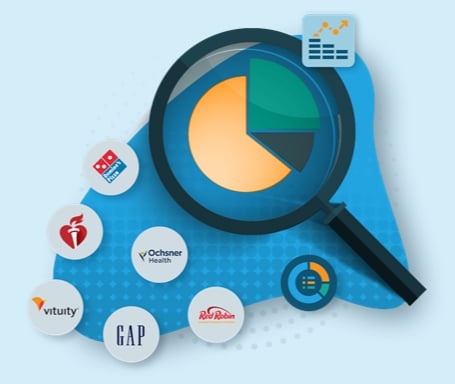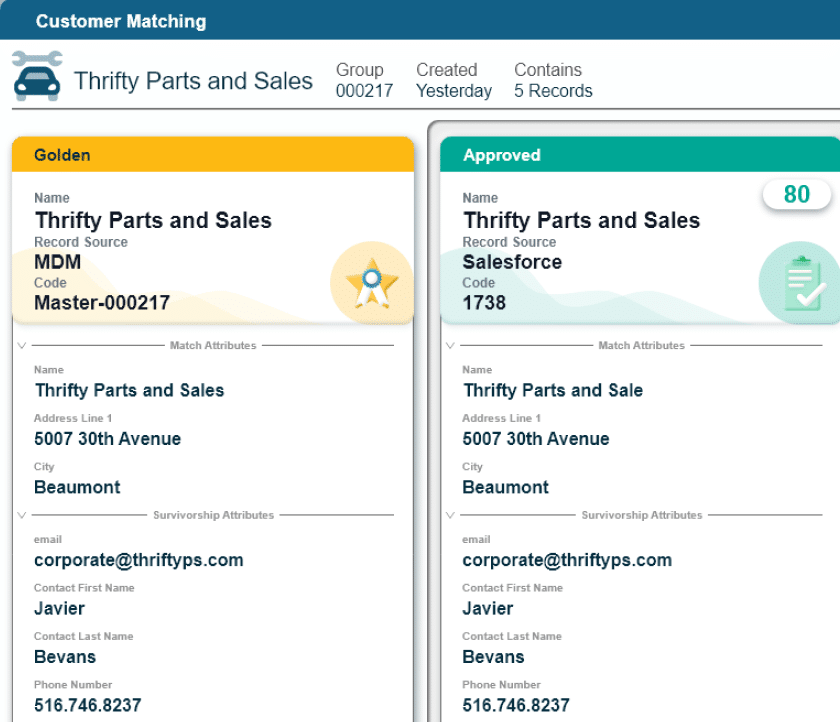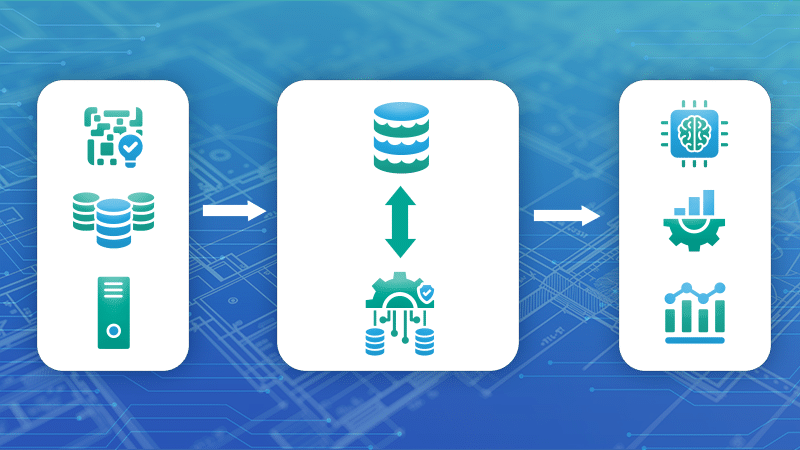Key Takeaways
Truth in business is always contextual, and multiple “truths” can coexist across functions like sales, finance and marketing.
Adaptive data governance is essential to support decentralized rule-making and reconcile functional differences when enterprise-level truth is required.
Master data management (MDM) enables alignment by serving as a federation platform that bridges siloed systems and ensures data consistency where it matters most.
Ask a hundred data professionals whether there can be a single version of the truth and you’re likely to get a hundred different answers. Some will say yes. Others will say absolutely not. Most, like me, will say, “It depends.”
Let’s unpack that.

Accelerate Microsoft Fabric Success
The Ideal: One Truth to Rule Them All?
In the early days of enterprise data management and monolithic ERP applications, the idea of a “single version of the truth” was a rallying cry. It was simple. It was bold. And it implied certainty, stability and control in an otherwise chaotic data landscape. For IT, it became a promise: “Trust the data warehouse — we’ve got it right.” Many continue to embrace that rallying cry today.
But as anyone who has ever worked in a large organization knows, “truth” in business is rarely absolute. It is contextual.
Let me say that again, because this is foundational to how we need to think about data governance today:
Truth in business is contextual.
This leads to a reality that we, as data leaders, must grapple with:
- What is “true” in marketing might not be “true” in finance
- What is “true” for someone building a regional sales plan may conflict with what’s “true” for someone analyzing global revenue streams
- And what the CEO sees as the truth at an enterprise level may require a reconciliation of multiple functional truths from below
This doesn’t mean that data is (or will inevitably be) unreliable. It means that data must be governed — and consumed — with its context in mind.
Four Facts About Truth in the Enterprise
Let’s revisit a few foundational concepts that I shared recently on LinkedIn.
Fact 1: Truth is Always Contextually Bound
All data exists in a frame of reference. That frame might be functional (e.g., a CRM system), temporal (e.g., quarter-end data vs. real-time) or even contractual (e.g., customer vs. prospect definitions based on service level agreements).
Fact 2: There Are Multiple Contexts in Any Business
These typically fall into three levels:
- Functional (e.g., sales, finance, marketing)
- Cross-functional (e.g., quote-to-cash or procure-to-pay)
- Enterprise-wide (e.g., corporate strategy, investor reporting)
Fact 3: Multiple Contexts Mean Multiple Truths
Each level may require its own “truth,” even when discussing the same entities — like customers, products or transactions.
Fact 4: But Within One Context, There Can Only Be One Truth
If the CFO asks how many customers the company has, “it depends” is not an acceptable answer. In that moment, for that context, there is one right number.
This nuance is where many organizations get tripped up. Why?
Because managing multiple sets of data governance policies — to reflect the fact that there can be multiple versions of truth — is drastically more difficult (and expensive) than managing a single set of business rules. Many companies wrestle with a single set of rules for a single business context, let alone N sets of rules for N contexts.
These costs and complexities help to explain why federated governance models are so attractive. Individual business domains can “own” their own governance policies instead of a single centralized group having to define them on behalf of that domain.
As attractive as these federated approaches are, that doesn’t negate the need to have governance at higher levels of the organization to support the definition and enforcement of policies that span multiple functions and business processes.
Why ‘It Depends’ Is a Dangerous Answer
I opened this blog by asserting “it depends” is the right answer to the question of continued relevancy of the concept of a single version of the truth. Let me be clear — I’m not advocating for data anarchy or relativism. You simply can’t walk into a meeting with your board of directors and say, “Well, our customer count depends on who’s asking.” That’s a fast track to losing trust and credibility.
But this is exactly why adaptive data governance is so critical.
Too many data governance efforts still operate under the illusion that they can define and enforce a single, universal rule for every data element across the enterprise. This approach is not only outdated — it’s counterproductive.
Instead, we need governance models that are responsive to context.
This means:
- Allowing for decentralized rule making within functional areas
- Ensuring traceability and stewardship of those rules
- Enabling cross-functional reconciliation when enterprise-level truth is required
And, crucially, quantifying the business impact of doing so.
Where MDM Comes In
This is where master data management (MDM) proves its worth.
MDM doesn’t create truth; it reconciles it. It builds bridges between siloed systems and disparate business definitions. It allows an enterprise to recognize that sales may define a “customer” differently than finance and then resolves those differences when needed — without demanding that one function change its internal processes.
Think of MDM as a federation platform. It doesn’t dictate the rules for every business unit. Instead, it enables alignment where it matters most — at the points where functional truths intersect.
When done right, MDM empowers both local autonomy and enterprise cohesion. That’s not just smart governance — it’s smart business.
The Business Case for Contextual Truth
All of this may sound conceptually elegant, but let’s be blunt: Why should our data customers care?
Here’s why.
- Faster Decision-Making: When truths are clear — and relevant — within a context and reconcilable across contexts, business leaders can move faster with confidence.
- Lower Risk: The risk of regulatory non-compliance, financial misreporting or supply chain disruption goes down dramatically when truths are governed and aligned.
- Increased Efficiency: Teams waste less time arguing over whose numbers are “right” and more time solving actual business problems.
- Higher Trust in Data: Trust is not created by mandating a single truth. It’s earned by consistently providing the right truth in the right context.
And here’s the clincher: organizations that embrace this nuanced view of truth are better equipped to quantify the ROI of their data investments.
How? By linking improvements in contextual data quality to measurable outcomes like increased revenue, decreased time-to-close or reduced churn.
Adaptive Governance: A New Imperative
Let’s connect this back to something I’ve been advocating across all my communications channels for a while: adaptive governance.
Rigid, command-and-control governance models don’t scale in today’s complex, decentralized organizations. They don’t support agility. And they certainly don’t reflect the layered nature of truth in a large enterprise.
Adaptive governance acknowledges that:
- Different users need different truths
- Those truths must be governed, not ignored
- Governance should flex to fit the shape of the business — not the other way around
This shift — from rigid compliance to adaptive enablement — is fundamental to building a modern data strategy.
The Bottom Line
So, is there a single version of the truth?
Yes — and no.
There is a single version of the truth within any one business context. But across a global, functionally complex enterprise, there will always be multiple such truths.
Our job as data leaders is not to eliminate that complexity. It’s to manage it, govern it and extract value from it.
That’s the real opportunity.
And that’s why adaptive governance and robust MDM aren’t just “nice to haves.” They are essential pillars of modern enterprise performance.

Malcolm Hawker
Malcolm Hawker is a former Gartner analyst and the Chief Data Officer at Profisee. Follow him on LinkedIn.








